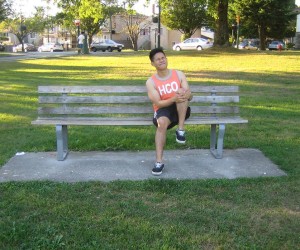The biceps femoris tendon is a hamstring muscle tendon that can end up damaged during certain sports or activities. If an individual sustained damage to this tendon, it will cause pain on the exterior, rear part of the knee joint which is a condition called as biceps femoris tendinopathy.
Symptoms
The symptoms of biceps femoris tendinopathy typically include swelling and tenderness in the area where the tendon inserts into the bone. It is important to note that the tender area involves the outside back part of the knee. In case the other two tendons are involved, there might be tenderness medially.
There might be pain when the individual attempts to bend the knee against resistance as well as stiffness after exercise and the next day. The individual will often end up with tightened hamstring muscles.
Close look on biceps femoris tendinopathy

The hamstring muscles are comprised of the biceps femoris, semimembranosus and semitendinosus muscles. Take note that these muscles are utilized in order to bend the knee as well as extending the hip backwards.
The inflammation of the tendon at the point it inserts into the bone can occur from a partial rupture that has not healed properly or through overuse, especially from activities that involve decelerating and accelerating movements.
Most commonly, it is the biceps femoris tendon that is involved. It attaches to the exterior of the back part of the knee.
Treatment of biceps femoris tendinopathy
If the injury sustained by the individual is recent or acute, the individual should be given time to rest and apply an ice pack for 10-15 minutes every hour for the initial 24-48 hours. It is also recommended to use an elastic type support to help minimize any swelling and provide support to the joint. To learn to recognize and manage muscle injuries, sign up for a first aid class today.
Once the initial acute phase has passed or if the injury is a long-term chronic condition, it is time to apply heat and use a heat retainer knee support to provide a beneficial effect.
In most cases, the doctor will prescribe an anti-inflammatory medication such as ibuprofen during the early stages of the condition in order to minimize pain, inflammation and swelling. On the other hand, this is less suitable in the late stages of rehabilitation. Using ultrasound or laser treatment can also help with the inflammation and healing process as well as cross-friction massage.
A full rehabilitation program is usually comprised of stretching and strengthening exercises that must be done as soon as the pain allows. Steadily increasing the load through the tendon so it can cope with the usual demands of a particular sport is the objective. Take note that he eccentric exercises in which the muscle contracts as it lengthens are highly beneficial in the management of bicep femoris tendinopathy.
